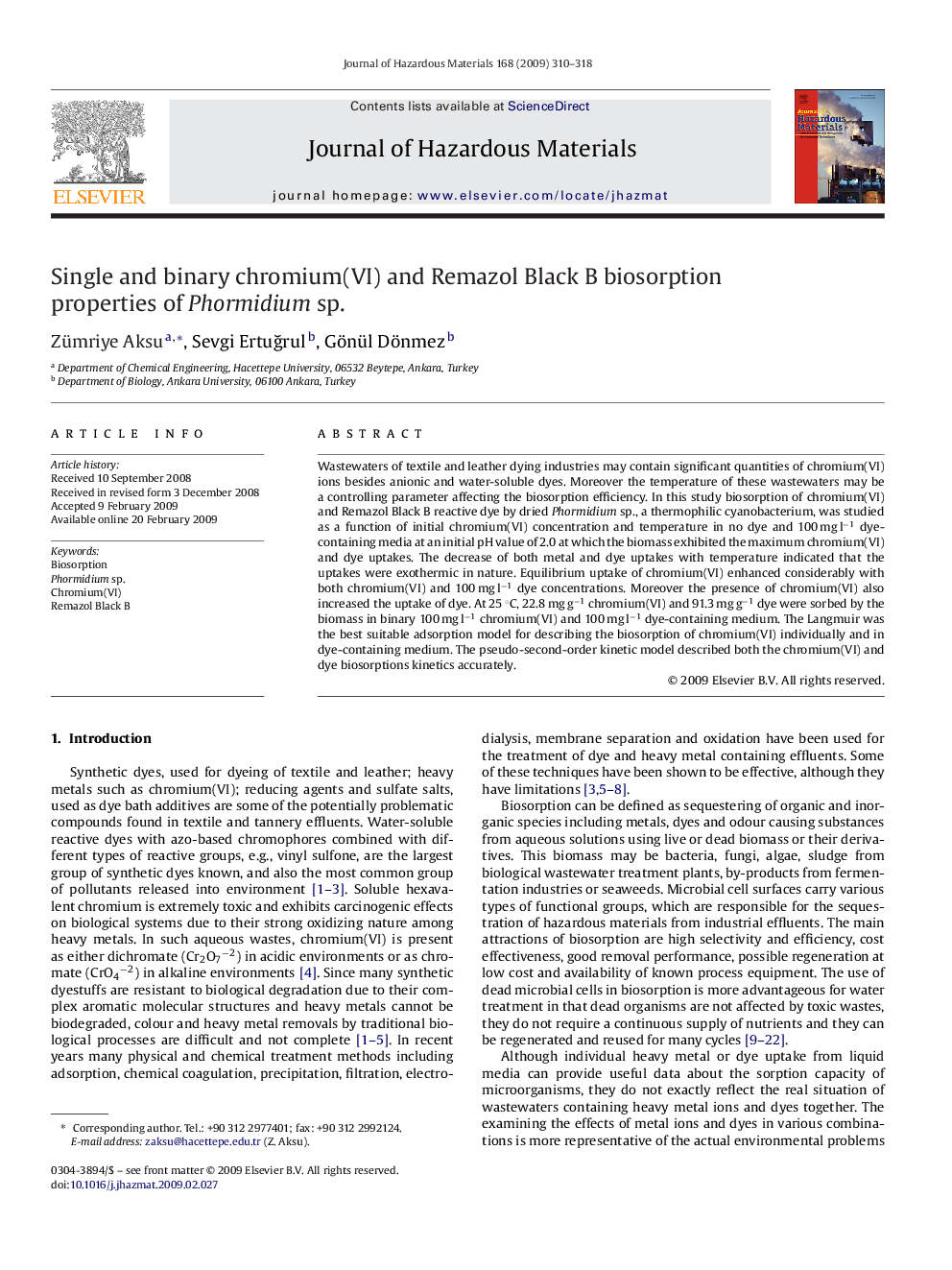| Article ID | Journal | Published Year | Pages | File Type |
|---|---|---|---|---|
| 581344 | Journal of Hazardous Materials | 2009 | 9 Pages |
Abstract
Wastewaters of textile and leather dying industries may contain significant quantities of chromium(VI) ions besides anionic and water-soluble dyes. Moreover the temperature of these wastewaters may be a controlling parameter affecting the biosorption efficiency. In this study biosorption of chromium(VI) and Remazol Black B reactive dye by dried Phormidium sp., a thermophilic cyanobacterium, was studied as a function of initial chromium(VI) concentration and temperature in no dye and 100 mg lâ1 dye-containing media at an initial pH value of 2.0 at which the biomass exhibited the maximum chromium(VI) and dye uptakes. The decrease of both metal and dye uptakes with temperature indicated that the uptakes were exothermic in nature. Equilibrium uptake of chromium(VI) enhanced considerably with both chromium(VI) and 100 mg lâ1 dye concentrations. Moreover the presence of chromium(VI) also increased the uptake of dye. At 25 °C, 22.8 mg gâ1 chromium(VI) and 91.3 mg gâ1 dye were sorbed by the biomass in binary 100 mg lâ1 chromium(VI) and 100 mg lâ1 dye-containing medium. The Langmuir was the best suitable adsorption model for describing the biosorption of chromium(VI) individually and in dye-containing medium. The pseudo-second-order kinetic model described both the chromium(VI) and dye biosorptions kinetics accurately.
Related Topics
Physical Sciences and Engineering
Chemical Engineering
Chemical Health and Safety
Authors
Zümriye Aksu, Sevgi ErtuÄrul, Gönül Dönmez,
